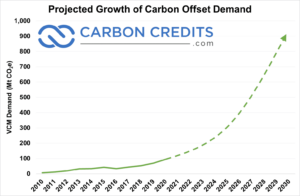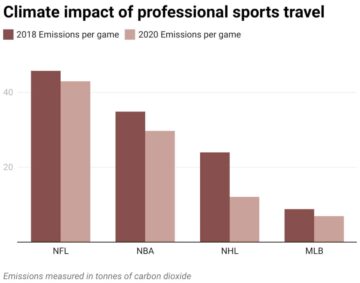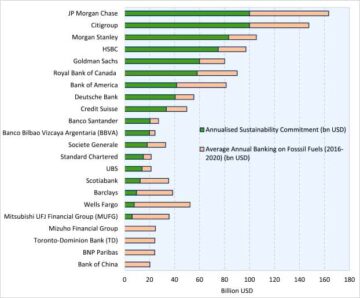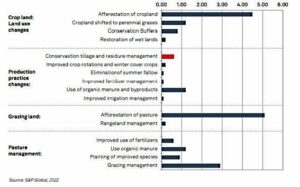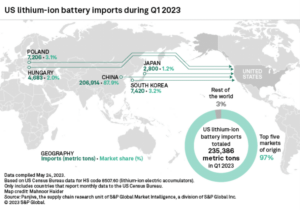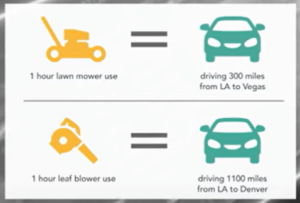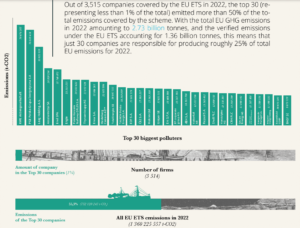Reducing emissions is a must but we’re running out of time and the technology needed to do the job is not always there. This is where carbon credits come in to help reduce emissions significantly.
So, how do carbon credits help slash carbon emissions and what benefits do they provide? Also, what is the role of carbon trading in cutting emissions? This article will answer these questions and more about the impact of carbon credits and how to make money from them.
Let’s start by explaining how carbon credits help in reducing emissions.
Carbon credits are a market-based tool designed to create financial incentives for entities to cut their carbon footprint and invest in cleaner, more sustainable practices.
Governments play a big role in this space by implementing cap-and-trade systems. Under this system, also known as the compliance carbon market, companies must comply with a cap set on the total greenhouse gas emissions they’re allowed to emit within a certain period.
If they go beyond these limits, they either pay the fine or buy carbon credits from companies with surplus credits. In contrast, if they emit below their emissions cap, they generate credits for it – one credit represents one metric tonne of carbon emissions.
Another way to generate carbon credits is through different emission reduction or removal projects. Common examples of these projects are reforestation, renewable energy installations, carbon capture and storage, carbon farming practices, among others.
Entities seeking to voluntarily offset their emissions can purchase the credits generated by those projects. Or companies can also directly fund the project during their early development phase.
These credits are traded in the voluntary carbon market (VCM), which has been growing in volume and dollar value in billions.
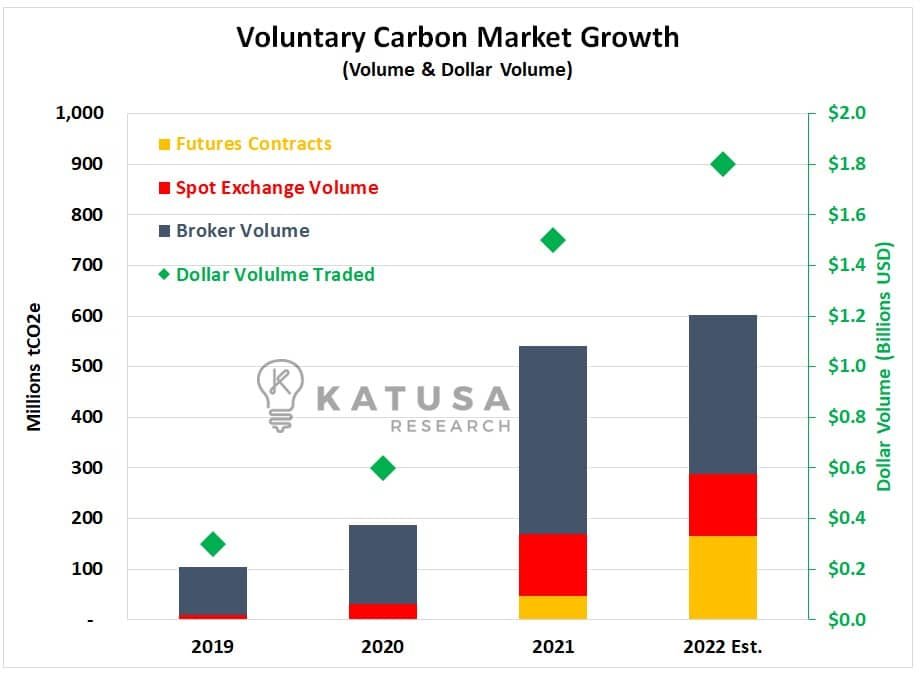

Those initiatives reduce the concentration of greenhouse gasses in the atmosphere but without carbon credits, they won’t be financially viable. Thus, carbon credit projects also contribute to mitigating climate change.
Realizing their importance in slashing carbon emissions, more and more companies are voluntarily supporting efforts that generate carbon credits. As such, experts project that demand for voluntary carbon credits will grow exponentially.
McKinsey predicts that annual demand for carbon credits would go up to 2.0 gigatons of carbon dioxide (GtCO2) by 2030 and 13 GtCO2 by 2050.
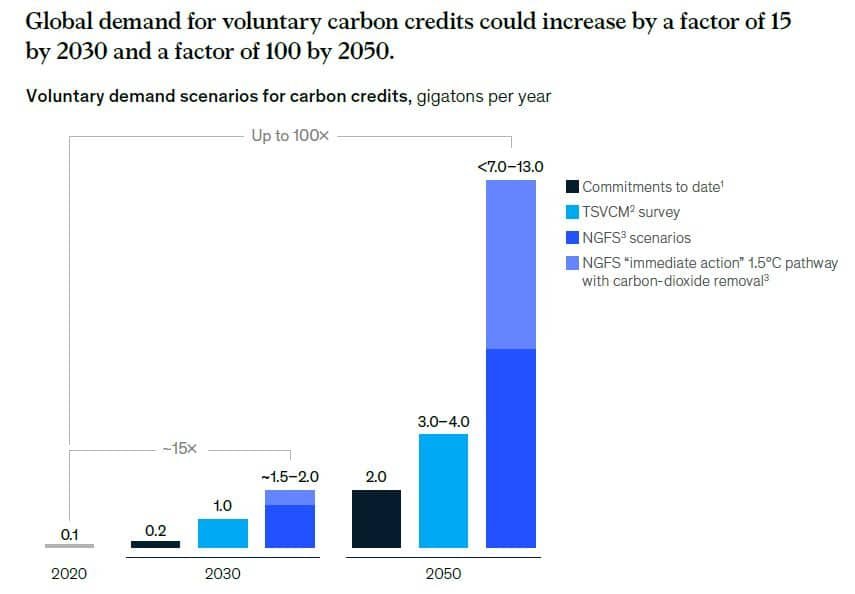

In terms of market value, it can go between $30 billion and up to $50 billion in 2030. Several factors affect the actual market size such as project type and location.
Now you may get the idea of how carbon credits help reduce emissions at the gigatons scale. So, next up we’ll explain how you can generate carbon credits for trees.
How To Get Carbon Credits For Trees?
Carbon credits are most often created through the agricultural or forestry sector by planting or protecting standing trees. But of course you can get carbon credit through any project mentioned earlier that reduces, avoids, removes or captures emissions.
Acquiring carbon credits for trees translates to engaging in projects that promote afforestation, reforestation, or sustainable forest management practices. These projects seek to enhance the carbon sequestration potential of forests, capturing and storing CO2 in biomass.
You can start getting carbon credits for trees by first, choosing the right type of forest project that aligns with your goals. You can select from three various project types identified above that generate carbon credits for trees.
Next thing to do is to develop a plan outlining the project area, tree species, estimated carbon sequestration (amount of captured and stored carbon), and project timeline.
Then register the project with recognized carbon standard bodies such as Verra’s VCS, Gold Standard, and American Carbon Registry. Then don’t miss out on measuring the baseline level of carbon on your project site to base estimated carbon sequestration.
There’s one thing you mustn’t leave out though – monitoring and verifying tree planting or forest management progress through 3rd-party auditors to ensure compliance with standards.
Only after verification that your project would receive the credits that you can sell to companies for offsetting purposes. Lastly, maintain the integrity of your project by continuing sustainable practices to keep carbon sequestration validity.
What if you’re not into planting trees? Don’t worry because you can still get carbon credits by following the steps outlined below.
Key Steps on How To Generate Carbon Credits
In general, you can earn carbon credits through these four major phases:
- Project Development:
Same as above, you have to identify and plan a project that lowers emissions or enhances carbon sequestration, be it carbon farming or renewable energy installation. Then define project activities, location, baseline emissions, and the expected reductions and other environmental impacts.
- Verification and Validation:
Work with recognized carbon standard organizations and independent auditors to verify and validate your project’s environmental benefits. And then calculate emission reductions and/or increased carbon sequestration using reliable methodologies.
- Carbon Credit Issuance:
After project verification, you can now receive carbon credits based on your project’s verified carbon reductions.
- Registry and Trading:
Now that you have been issued with the credits, you need to register them in registries to make them available for trading. Interested buyers can buy the credits to offset their own emissions and support your carbon emissions efforts.
How To Make Money From Carbon Credits
Apparently, you can make money from carbon credits by following the steps above. But selling credits in established carbon exchanges and trading platforms is just one way to turn them into cash.
Apart from trading in those marketplaces, you can directly deal with buyers through private transaction negotiations. This way gives you more flexibility in setting prices and contractual agreements.
Another option to make money from carbon credits is partnering with carbon offset service providers and offering your credits via their platforms. In this way, you’ll reach a wider audience.
And of course, it’s important that you’re consistent in monitoring your project as carbon standards require periodic verification to ensure your credits remain valid over time.
How Do You Get Carbon Credits?
In the race against time to slash emissions, carbon credits are a game-changer. Generating and trading these market-based tools does help reduce carbon emissions by incentivizing entities to invest in sustainable practices.
From cap-and-trade systems to voluntary emission reduction projects, we unpack how carbon credits work and outline the steps on how you can get them. The best thing about this is that apart from getting and profiting from the credits, you also help drive meaningful strides towards a greener future.
- SEO Powered Content & PR Distribution. Get Amplified Today.
- PlatoData.Network Vertical Generative Ai. Empower Yourself. Access Here.
- PlatoAiStream. Web3 Intelligence. Knowledge Amplified. Access Here.
- PlatoESG. Automotive / EVs, Carbon, CleanTech, Energy, Environment, Solar, Waste Management. Access Here.
- PlatoHealth. Biotech and Clinical Trials Intelligence. Access Here.
- ChartPrime. Elevate your Trading Game with ChartPrime. Access Here.
- BlockOffsets. Modernizing Environmental Offset Ownership. Access Here.
- Source: https://carboncredits.com/how-do-carbon-credits-reduce-emissions/
- :has
- :is
- :not
- :where
- $UP
- 1
- 13
- 2030
- a
- About
- above
- activities
- actual
- affect
- After
- against
- agreements
- Agricultural
- Aligns
- allowed
- also
- always
- American
- among
- amount
- and
- annual
- answer
- any
- apart
- ARE
- AREA
- article
- AS
- At
- Atmosphere
- audience
- auditors
- available
- base
- based
- Baseline
- BE
- because
- been
- below
- benefits
- BEST
- between
- Beyond
- Big
- Billion
- billions
- biomass
- bodies
- but
- buy
- buyers
- by
- calculate
- CAN
- Can Get
- cap
- capture
- captured
- captures
- Capturing
- carbon
- carbon capture
- carbon credits
- carbon dioxide
- carbon emissions
- carbon footprint
- Carbon Sequestration
- carbon trading
- Cash
- certain
- change
- choosing
- Climate
- Climate change
- co2
- come
- Common
- Companies
- compliance
- comply
- concentration
- consistent
- continuing
- contractual
- contrast
- contribute
- course
- create
- created
- credit
- Credits
- Cut
- cutting
- data
- deal
- Demand
- designed
- develop
- Development
- different
- directly
- do
- does
- Dollar
- Dont
- drive
- during
- Earlier
- Early
- earn
- efforts
- either
- emission
- Emissions
- energy
- engaging
- enhance
- Enhances
- ensure
- entities
- environmental
- established
- estimated
- Ether (ETH)
- examples
- expected
- experts
- Explain
- explaining
- exponentially
- factors
- farming
- financial
- financially
- fine
- First
- Flexibility
- following
- Footprint
- For
- forest
- four
- from
- fund
- future
- game-changer
- GAS
- General
- generate
- generated
- generating
- get
- getting
- gives
- Go
- Goals
- Gold
- Gold Standard
- greenhouse gas
- Greenhouse gas emissions
- Grow
- Growing
- Growth
- Have
- help
- How
- How To
- http
- HTTPS
- idea
- identified
- identify
- if
- Impact
- Impacts
- implementing
- importance
- important
- in
- Incentives
- incentivizing
- increased
- independent
- initiatives
- installation
- integrity
- interested
- into
- Invest
- issuance
- Issued
- IT
- Job
- jpg
- just
- just one
- Keep
- known
- Leave
- Level
- limits
- location
- maintain
- major
- make
- make money
- management
- Market
- market value
- marketplaces
- max-width
- May..
- McKinsey
- meaningful
- measuring
- mentioned
- methodologies
- metric
- mitigating
- money
- monitoring
- more
- most
- must
- Need
- needed
- negotiations
- next
- now
- of
- offering
- offset
- often
- on
- ONE
- Option
- or
- organizations
- Other
- Others
- out
- outline
- outlined
- over
- own
- partnering
- Pay
- period
- periodic
- phase
- plan
- Planting
- planting trees
- Platforms
- plato
- Plato Data Intelligence
- PlatoData
- Play
- potential
- practices
- Predicts
- Prices
- private
- Progress
- project
- projects
- promote
- protecting
- provide
- providers
- purchase
- purposes
- Questions
- Race
- reach
- receive
- recognized
- reduce
- reduces
- reducing
- reducing emissions
- reduction
- reductions
- register
- registries
- registry
- reliable
- remain
- removal
- Renewable
- renewable energy
- represents
- require
- right
- Role
- running
- Scale
- sector
- Seek
- seeking
- sell
- Selling
- sequestration
- service
- service providers
- set
- setting
- Setting prices
- several
- significantly
- site
- Size
- slashing
- So
- Space
- standard
- standards
- start
- Steps
- Still
- storage
- stored
- strides
- such
- support
- Supporting
- surplus
- sustainable
- system
- Systems
- Technology
- terms
- that
- The
- their
- Them
- then
- There.
- These
- they
- thing
- this
- those
- though?
- three
- Through
- Thus
- time
- timeline
- to
- tool
- tools
- Total
- towards
- traded
- Trading
- Trading Platforms
- transaction
- tree
- Trees
- TURN
- type
- types
- under
- using
- VALIDATE
- validation
- value
- various
- Verification
- verified
- verify
- verifying
- via
- viable
- volume
- voluntarily
- voluntary
- W3
- Way..
- we
- webp
- What
- What is
- which
- wider
- will
- with
- within
- without
- Work
- worry
- would
- you
- Your
- zephyrnet




